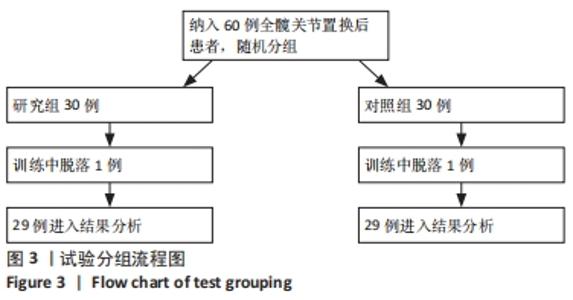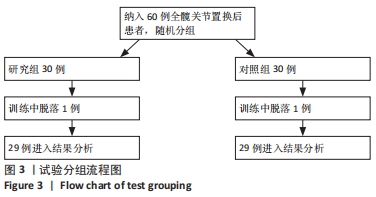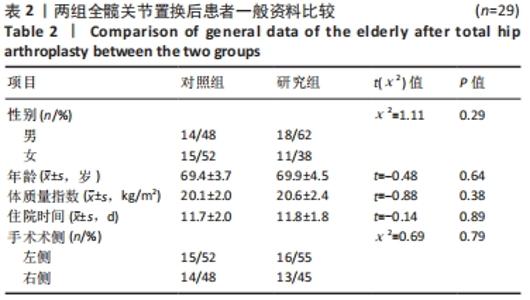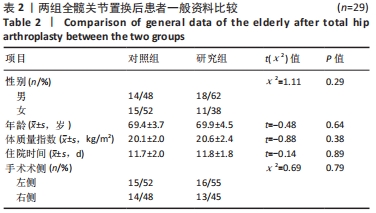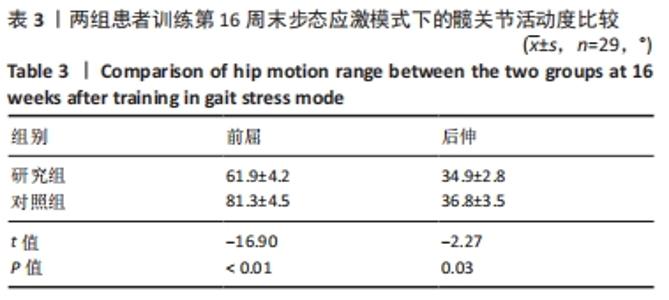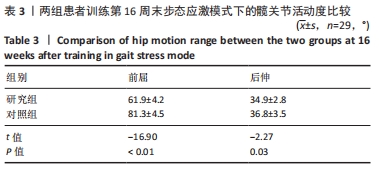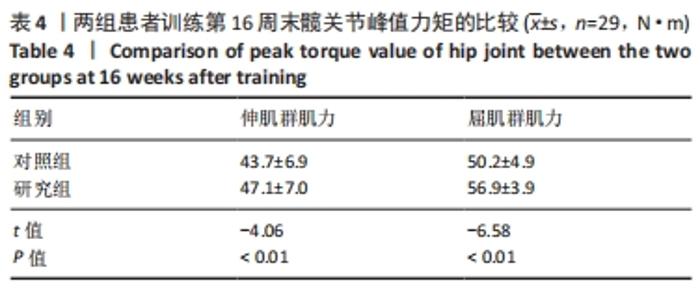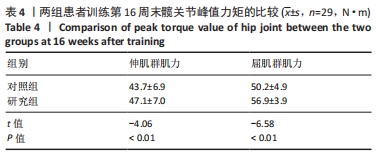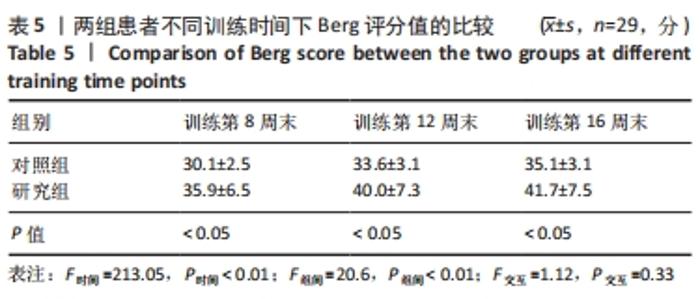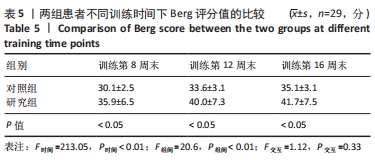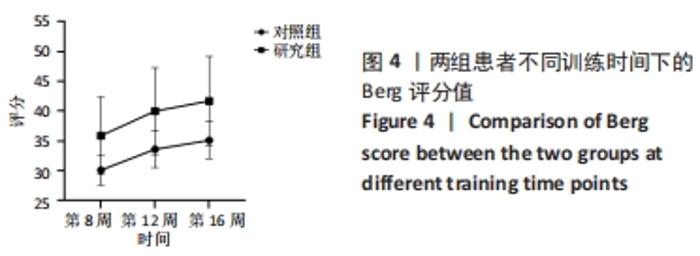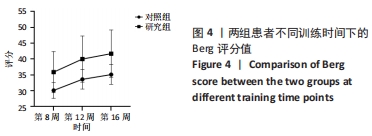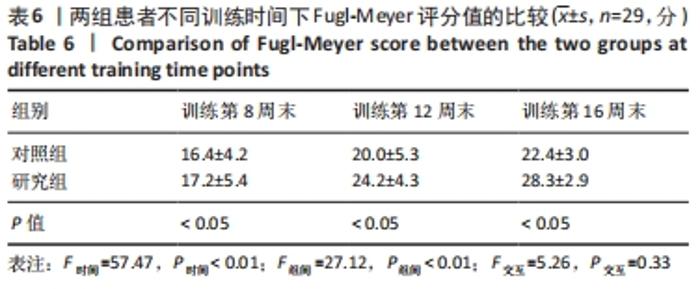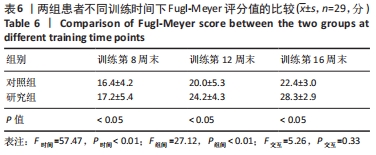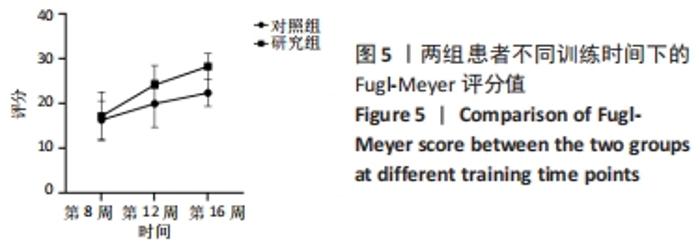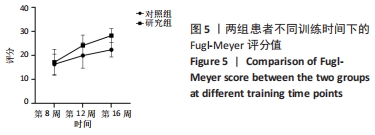[1] 戴尅戎,李慧武,严孟宁.我国人工关节加速发展的二十年[J].中华关节外科杂志(电子版),2015,9(6):691-694.
[2] CLAßEN T, SCHEID C, LANDGRAEBER S, et al. [Characteristics of elective hip replacement in the elderly]. Orthopade. 2017;46(1):25-33.
[3] ALEXIOU KI, ROUSHIAS A, VARITIMIDIS SE, et al. Quality of life and psychological consequences in elderly patients after a hip fracture: a review. Clin Interv Aging. 2018;13:143-150.
[4] 石珊,田燕,范娇娥.全髋关节置换术中应用康复外科策略的效果[J].实用临床医药杂志,2018,22(6):75-77.
[5] 梁华美.快速康复外科理念在老年人工髋关节置换术患者术后护理中的应用[J].实用临床护理学电子杂志,2020,5(11):72.
[6] 白金,许可可,赵树华,等.老年人工全髋关节置换术后康复治疗的研究进展[J].中华老年骨科与康复电子杂志,2018,4(2):125-128.
[7] ZHAO BL, LI WT, ZHOU XH, et al. Effective robotic assistive pattern of treadmill training for spinal cord injury in a rat model. Exp Ther Med. 2018;15(4):3283-3294.
[8] STERR A, FREIVOGEL S. Motor-improvement following intensive training in low-functioning chronic hemiparesis. Neurology. 2003;61(6):842-844.
[9] LIEPERT J, BAUDER H, WOLFGANG HR, et al. Treatment-induced cortical reorganization after stroke in humans. Stroke. 2000;31(6):1210-1216.
[10] 姚嘉欣,李哲.下肢康复机器人在脊髓损伤康复中的应用[J].中国现代医生, 2020,58(35):187-192.
[11] 冯昱宁,李开南,贾子善.平衡障碍康复机器人在老年下肢骨折患者术后康复中的应用效果研究[J].中国全科医学,2021,24(25):3233-3237.
[12] 石男强,刘刚峰,郑天骄,等.下肢康复机器人的研究进展与临床应用[J].信息与控制,2021,50(1):43-53.
[13] KIM WS, CHO S, KU J, et al. Clinical Application of Virtual Reality for Upper Limb Motor Rehabilitation in Stroke: Review of Technologies and Clinical Evidence. J Clin Med. 2020;9(10):3369.
[14] 张小栋,陈江城,尹贵.下肢康复机器人肌电感知与人机交互控制方法[J].振动、测试与诊断,2018,38(4):649-657+866.
[15] YAKUB F, MD KHUDZARI AZ, MORI Y. Recent trends for practical rehabilitation robotics, current challenges and the future. International journal of rehabilitation research. Internationale Zeitschrift fur Rehabilitationsforschung. Int J Rehabil Res. 2014;37(1):9-21.
[16] MAGGIO MG, TORRISI M, BUDA A, et al. Effects of robotic neurorehabilitation through lokomat plus virtual reality on cognitive function in patients with traumatic brain injury: A retrospective case-control study. Int J Neurosci. 2020; 130(2):117-123.
|
